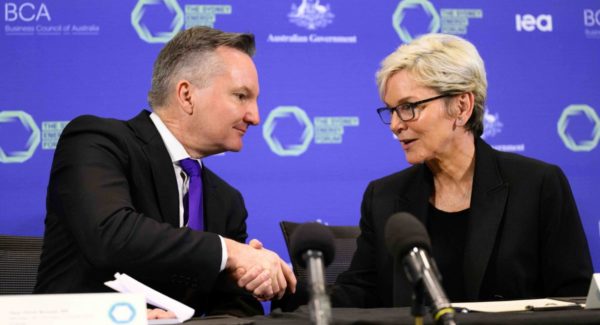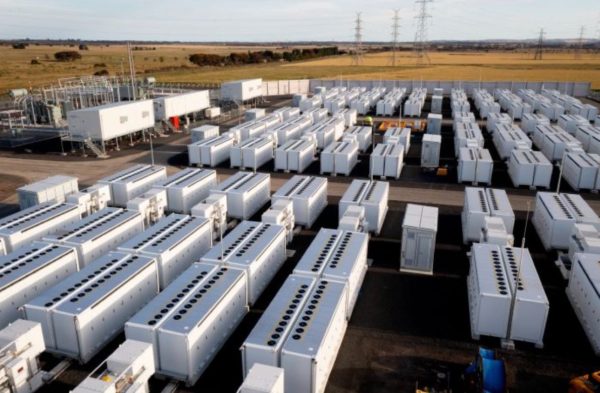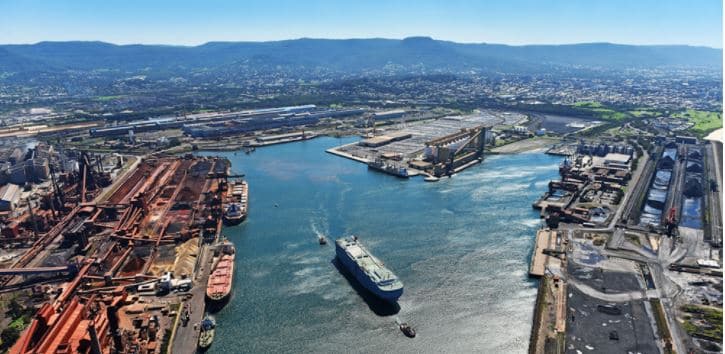David Scaysbrook, cofounder and managing partner of one of Australia’s biggest renewable energy transition investors, Quinbrook, describes the US Inflation Reduction Act of 2022 as one of the most “profound” policy measures seen in his career, and one which deeply implicates Australia.
“I think it will represent and does represent a material new export opportunity for this country that is analogous to the green new ‘superpower,’ but possibly not for the same reasons that we might have thought six months ago,” Scaysbrook said at a briefing on Nov. 22.
That is, until now much of Australia’s superpower ambitions have rested on green hydrogen exports. “The [Inflation Reduction Act] has some bad news for Australia in that context.”
“And that is the degree to which the hydrogen supply chain will be subsidised in the United States which will make it very, very difficult for Australia to compete with US exports of green ammonia, for example,” Scaysbrook said.

Image: Quinbrook Infrastructure Partners
“At every step of the supply chain from the renewable power to the onshore manufacture of electrolysers through to the manufacturing of the actual hydrogen product and the degree to which that is subsidised – something north of $5 a kilo is just the end product subsidy – it will be devastating from a competitive perspective.”
While Scaysbrook says there may remain opportunities for domestic production and consumption of green hydrogen, as well as some export opportunities with proximate neighbours like Korea and possibly Japan, the export vision on which much of Australia’s strategy rests has become tricky.
Scaysbrook’s take echoes that of BayWa r.e. Australia’s technology innovation and hydrogen lead, Dr James Hamilton. Hamilton explained to pv magazine earlier this month why he sees the international export opportunity for green hydrogen and ammonia as much softer than hyped.
Coming back to Scaysbrook, he thinks the Inflation Reduction Act will alter the flow of capital globally and force major strategy changes, deeming the policy for Australia a “genuine double edge sword.”
“There are fantastic opportunities in raw materials, mining, extraction… and we’re seeing some alliances being struck right now.”

Image: US Embassy Australia/Twitter
Scaysbrook forecasts these alliances and partnerships will be the most interesting part of Australia’s renewable horizons in 2023. Over next 12 months, he expects “tangible commitments” will be made to new processing, as well as new critical mineral partnerships with the US, including joint ventures involving Australian governments at both the federal and state levels.
These moves he says will be more consequential than what is going on in the “vanilla” renewable energy space – that is, projects focused primarily on selling renewable generation into the national electricity market. “The risk/reward equation [in Australia] has until recently not been particularly compelling… and for what I would say are fairly vanilla renewables, I don’t think that’s going to change this year or even the year after.”
Scaysbrook expects many press releases and announcements, especially in the storage space, but doubts whether these will become tangible assets. “Overall, I think next year will be pretty lean in terms of investment numbers despite all the headline activity.”

Image: Energy Victoria
Where Scaysbrook does see unique promise in Australia is in the development of new low carbon industries.
“Without giving the game away, I think the projects that are directly fuelling these new industry opportunities that are more directly, physically linked to the supply solution rather than just generation wind power or solar power [hold the greatest opportunity].”
By this Scraysbrook means projects directly coupled to newly critical materials, industries or green metals manufacturing.
“That’s certainly where we’ve been focussing our attention,” Scaysbrook said, describing Quinbrook’s play as creating “industrial decarbonisation partnerships.”
“So this is energy intensive industries that need carbon-free power, energy, steam, heat to invest in new factories and new processing and mining operations. That’s where we think Australia does offer more opportunity for better returns because the demand is going to be there, particularly from America, and so you’re going to have a ready-made customer base.”
This content is protected by copyright and may not be reused. If you want to cooperate with us and would like to reuse some of our content, please contact: editors@pv-magazine.com.









Hydrogen as a fuel & export commodity is a non starter, and shouldn’t even be considered. The costs to produce (Green Hydrogen from renewables should be the only form of Hydrogen being discussed moving forward), transport, and store hydrogen makes it a non starter. Converting it to ammonia for use in fertilizers is an option, if cost competitive, but if you want to use ammonia as a transport mechanism, only to have it converted back to produce electricity, it makes no financial sense. If Australian governments are going to “drink the fossil fuel provided kook-aid” when it comes to fossil fuel, it should be seen as a way to decarbonize existing heavy industries, like steel production, and be produced & used at source. Any ideas to produce, ship, store, or use Hydrogen as a fuel should be dropped, it’s not cost effective, takes more energy to produce from renewables (3x more), so that you would be better off putting the green energy/electricity produced straight into the grid. The oil & gas companies NEED to pivot to something that is “perceived as being green”, and preserve their current business model of producing, shipping, and selling hydrogen instead of oil/gas … governments shouldn’t buy into this proposed false silver bullet, they should do their own research, consult independent scientists & chemical engineers and stop listening to lobbyists backed by oil & gas money. Hydrogen isn’t the answer to a renewable sustainable independent energy future, don’t fall for it!